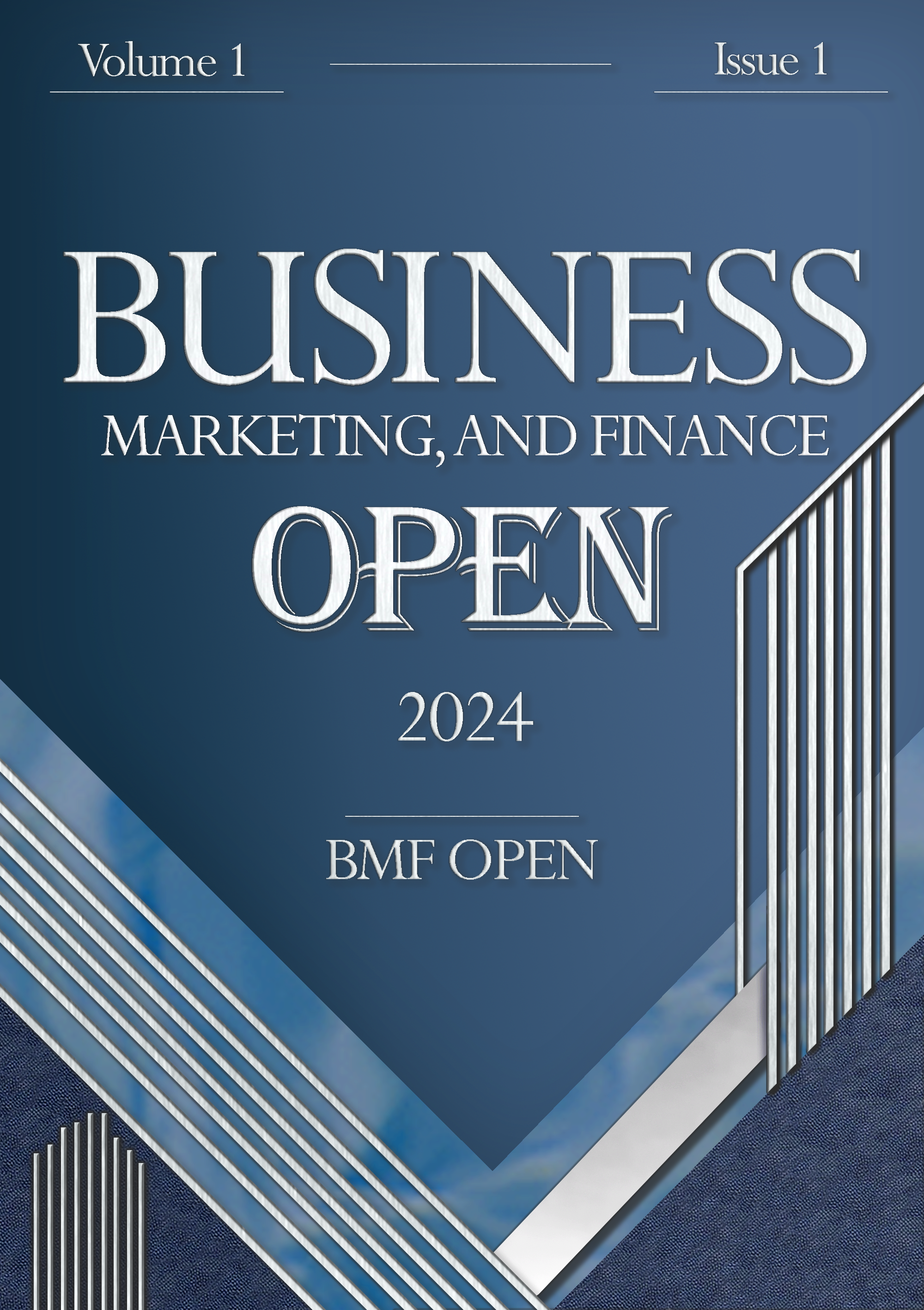The Impact of Globalization, Demographic, and Economic Development Variables on Entrepreneurship Using the Pooled Mean Group (PMG) Approach (Case Study: Selected Developing Asian Countries)
Keywords:
Globalization variables, Demographic variables, Economic development variables, Pooled Mean Group (PMG) approach, Developing Asian countriesAbstract
Entrepreneurship is regarded as a symbol of effort and success in business affairs, and entrepreneurs are the pioneers of commercial achievement in society. Today, entrepreneurship has emerged as a profession and, like other professions, must be developed and nurtured through specific educational and academic programs based on behavioral and empirical studies. Given the importance of entrepreneurship in the development process of today's world—an era marked by the expansion of international trade and economic globalization—the necessity of addressing entrepreneurship-related issues, especially from an economic perspective, is increasingly recognized. Therefore, the objective of this study is to examine the impact of globalization variables—including export diversification and foreign direct investment (FDI); demographic variables—including labor force and urbanization; and economic development variables—including industrialization and human development—on entrepreneurship in selected developing Asian countries (i.e., those with relatively high Human Development Index) over the period 2006–2023, using the Pooled Mean Group (PMG) approach. The estimation results revealed that the effects of export diversification, foreign direct investment, active population, urbanization, industrialization, and human capital on entrepreneurship in the selected developing Asian countries are positive and statistically significant in both the short and long term. Moreover, the error correction term coefficient in this model was estimated at –0.62 and is statistically significant, indicating the speed of adjustment toward long-run equilibrium. This coefficient suggests that export diversification, foreign direct investment, the active population, urbanization, industrialization, and human capital eliminate 62% of the disequilibria in the model in each period to restore long-run equilibrium. Given that the error correction term is negative and significant, it can be concluded that there exists at least one long-run causal relationship among the variables in the model.
References
T. Bielialov and E. Ashyrov, "Innovation Ecosystem as a Tool for Development of an Entrepreneurial University," Economic Scope, no. 198, pp. 3-8, 2025, doi: 10.30838/ep.198.3-8.
N. V. Feranita, A. Dwimahendrawan, and N. A. Mayasiana, "Identification of Dynamic Capability Elements for Women Entrepreneurs Performance Development to Achieve Gender Equality of SDG’s," JLSDGR, vol. 5, no. 3, p. e05448, 2025, doi: 10.47172/2965-730x.sdgsreview.v5.n03.pe05448.
M. Bagherzadeh and M. R. Sabet, "Study of the Impact of Human Capital on Social and Commercial Entrepreneurship (Case Study: Welfare Organization of Tehran Province)." Management, Economics, and Entrepreneurship Studies, vol. 3, no. 9, pp. 13-41, 2022.
А. Браунагель, "Strategic Directions of the Development of Social Entrepreneurship in Ukraine," Ukrainian Journal of Applied Economics, vol. 2025, no. 1, pp. 170-175, 2025, doi: 10.36887/2415-8453-2025-1-28.
P. Harisandi, "Creation of Micro Market Structure in MSMEs in Review of Social Entrepreneurship Involvement, Government Policy and Empowerment," Kontigensi Jurnal Ilmiah Manajemen, vol. 12, no. 1, pp. 231-246, 2024, doi: 10.56457/jimk.v12i1.534.
R. Jasiyah, "The Disabled Community Empowerment Model With Social Entrepreneurship Approach to Tenoon Business," Jurnal Informasi Dan Teknologi, pp. 92-98, 2024, doi: 10.60083/jidt.v6i2.534.
M. Malak Ara, "Social entrepreneurship and sustainable development," New World Journal, vol. 2, no. 5, 2024.
A. Shahabadi, A. Nikbakht, and S. Ghasemi Far, "The Impact of Urbanization Degree and Population Age Structure on Entrepreneurship Development.," Scientific Quarterly of Regional Planning, 2023.
S. Arbabian and Z. Zamani, "Analysis of the Interactive Effect of Financial Development and Human Capital on Entrepreneurship in Selected Countries.," Journal of Development and Capital, vol. 8, pp. 1-21, 2023.
S. Ghorbani, "Examining the Relationship Between Human Resource Value Creation and Organizational Entrepreneurship in Improving Economic Growth.," in Fifth National Conference on Management, Economics, and Islamic Sciences, 2023.
S. M. Mousavi Neghabi and M. Anousheh, "Examining the Impact of Industrial Infrastructure Development on Entrepreneurship in Small and Medium Industries.," in Second International Conference on Challenges and Innovative Solutions in Industrial Engineering, Management, and Accounting, 2021.
H. Kakayi, S. Maleki, H. Mohammadi, and S. Alizadeh, "Examining the Impact of Human Capital on Organizational Entrepreneurship (Case Study: Bank Mellat Branches in Tehran)." Quarterly Journal of New Research Approaches in Management and Accounting, vol. 5, no. 78, pp. 103-116, 2021.
S. M. R. Seyed Nourani and H. Mohammadpour, ""The Impact of Foreign Direct Investment on Employment in OECD Member Countries and Developing Countries."," Modern Economy and Trade, Scientific Research Quarterly, vol. 13, no. 2, pp. 53-79, 2018.
R. Dorali and A. Davari, "Examining the Impact of Human Capital on the Entrepreneurship Process.," in First National Conference on Science and Technology of the Third Millennium in Economics, Management, and Accounting in Iran, 2018.
H. Naderi Nasab and K. Soheili, "The Impact of Foreign Direct Investment, Institutional Quality, and Economic Freedom on Entrepreneurship.," Master's ThesisPB - Razi University - Faculty of Social Sciences, 2016.
A. Rastegar and A. Shabani, "The Mediating Role of Export Entrepreneurship in the Impact of Influential Factors on Export Performance.," Business Management Perspective, no. 27, pp. 73-90, 2016.
M. Sattari Far, H. R. Zarei, and N. Shokri, ""The Effect of Migration and Urbanization on Informal Employment in Various Regions of Iran."," Quarterly Journal of Economic Sciences, vol. 8, no. 9, pp. 49-69, 2014.
K. Tayebi and M. Fakhri, "The Effects of Globalization and International Trade on Entrepreneurship Development (Case Study: OECD Countries)." Entrepreneurship Development, vol. 3, no. 3, pp. 37-45, 2010.
P. C. Nguyen, N. Bach, and T. Su Dinh, "The importance of export diversification for national entrepreneurship density," Structural Change and Economic Dynamics, vol. 62, pp. 114EP - 129, 2022, doi: 10.1016/j.strueco.2022.05.003.
N. Dutta and D. Meierrieks, "Financial development and entrepreneurship," International Review of Economics and Finance, vol. 73, pp. 114-126, 2021, doi: 10.1016/j.iref.2021.01.002.
C. Sutter, G. D. Bruton, and J. Chen, "Entrepreneurship as a solution to extreme poverty: A review and future research directions," J. Business Venturing, vol. 34, pp. 197-214, 2019, doi: 10.1016/j.jbusvent.2018.06.003.
T. S. Adebayo and S. N. Y. Alheety, "Impacts of entrepreneurial competence and government policy on EEE s' non-oil export performance in the Southwest Nigeria," The International Journal of Humanities & Social Studies, vol. 7, no. 2, pp. 181-186, 2019, doi: 10.24940/theijhss/2019/v7/i2/HS1902-061.
B. Ajayi, "The impact of entrepreneurial orientation and networking capabilities on the export performance of Nigerian agricultural SMEs," Journal of Entrepreneurship and Innovation in Emerging Economies, vol. 2, no. 1, pp. 1-23, 2016, doi: 10.1177/2393957515619720.
A. P. Monteiro, A. Soares, and L. R. Rua, "Entrepreneurial orientation and export performance: the mediating effect of organisational resources and dynamic capabilities," Journal for International Business and Entrepreneurship Development, vol. 10, no. 1, pp. 1-20, 2017, doi: 10.1504/JIBED.2017.082749.
Downloads
Published
Submitted
Revised
Accepted
Issue
Section
License
Copyright (c) 2024 Karar Borhan Abd, Saeed Daei Karimzadeh, Amjad Jafar Habib Bahr al-Uloom, Hossein Sharifi Renani (Author)

This work is licensed under a Creative Commons Attribution-NonCommercial 4.0 International License.







